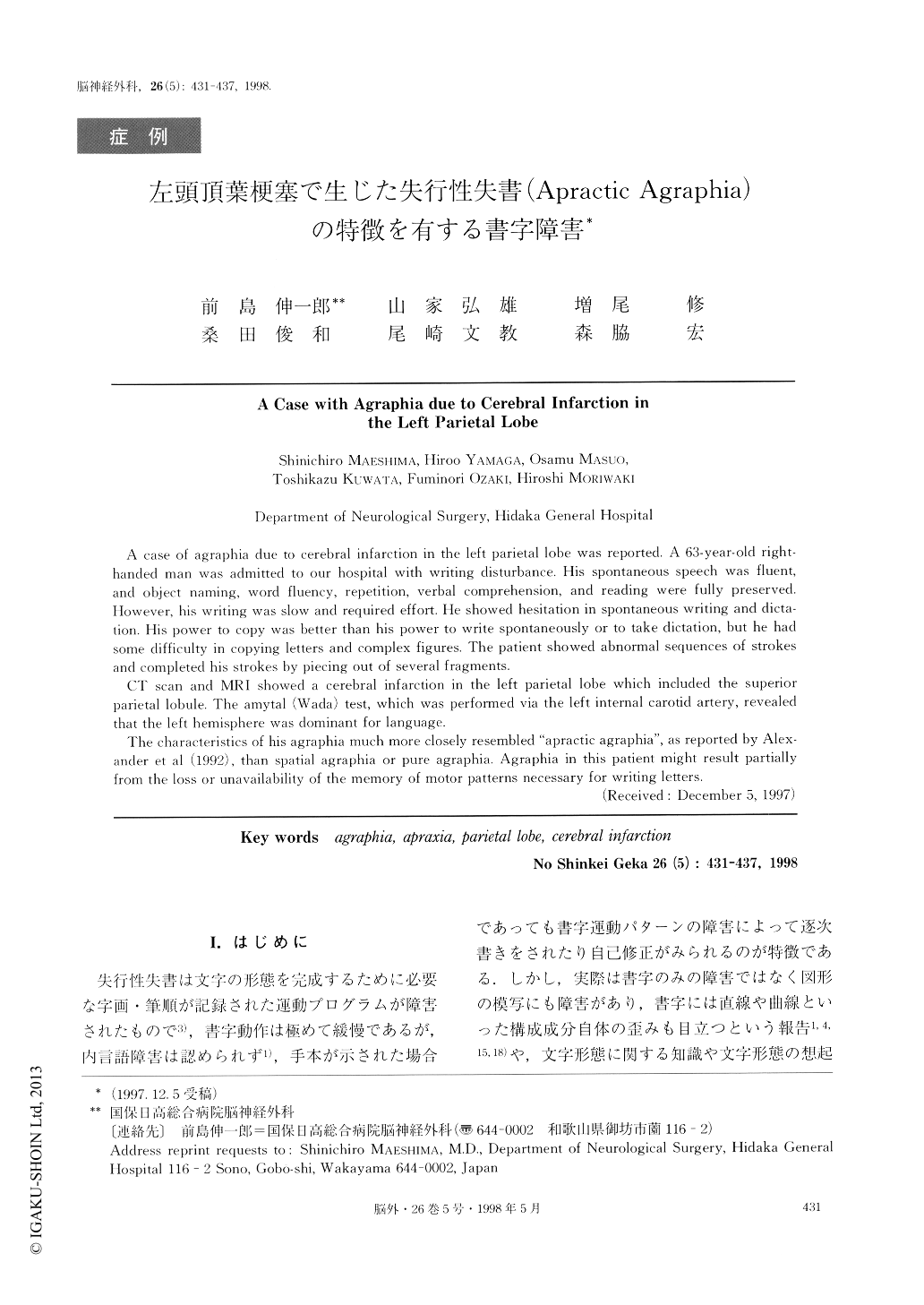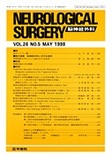Japanese
English
- 有料閲覧
- Abstract 文献概要
- 1ページ目 Look Inside
I.はじめに
失行性失書は文字の形態を完成するために必要な字画・筆順が記録された運動プログラムが障害されたもので3),書字動作は極めて緩慢であるが,内言語障害は認められず1),手本が示された場合であっても書字運動パターンの障害によって逐次書きをされたり自己修正がみられるのが特徴である.しかし,実際は書字のみの障害ではなく図形の模写にも障害があり,書字には直線や曲線といった構成成分自体の歪みも目立つという報告1,4,15,18)や,文字形熊に関する知識や文字形態の想起も障害されていたという報告5)があり,その書字障害の特徴は多彩である.欧米における失行性失書の報告例は多いが,本邦での報告は少ない.今回,われわれは優位半球頭頂葉病変で失行性失書の特徴を有する書字障害を呈した脳梗塞の1例を経験したので報告する.
A case of agraphia due to cerebral infarction in the left parietal lobe was reported. A 63-year-old right-handed man was admitted to our hospital with writing disturbance. His spontaneous speech was fluent,and object naming, word fluency, repetition, verbal comprehension, and reading were fully preserved.However, his writing was slow and required effort. He showed hesitation in spontaneous writing and dicta-tion. His power to copy was better than his power to write spontaneously or to take dictation, but he hadsome difficulty in copying letters and complex figures.
The patient showed abnormal sequences of strokesand completed his strokes by piecing out of several fragments.
CT scan and MRI showed a cerebral infarction in the left parietal lobe which included the superiorparietal lobule. The amytal (Wada) test, which was performed via the left internal carotid artery, revealedthat the left hemisphere was dominant for language.
The characteristics of his agraphia much more closely resembled “apractic agraphia”, as reported by Alex-ander et al (1992), than spatial agraphia or pure agraphia. Agraphia in this patient might result partiallyfrom the loss or unavailability of the memory of motor patterns necessary for writing letters.

Copyright © 1998, Igaku-Shoin Ltd. All rights reserved.


